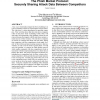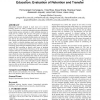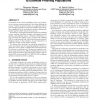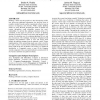FC
2006
Springer
14 years 3 months ago
2006
Springer
Abstract. Phishing, or web spoofing, is a growing problem: the Anti-Phishing Working Group (APWG) received almost 14,000 unique phishing reports in August 2005, a 56% jump over the...
FC
2010
Springer
14 years 3 months ago
2010
Springer
A key way in which banks mitigate the effects of phishing is to remove fraudulent websites or suspend abusive domain names. This ‘take-down’ is often subcontracted to special...
ECRIME
2007
14 years 3 months ago
2007
Tools that aim to combat phishing attacks must take into account how and why people fall for them in order to be effective. This study reports a pilot survey of 232 computer users...
ECRIME
2007
14 years 3 months ago
2007
Educational materials designed to teach users not to fall for phishing attacks are widely available but are often ignored by users. In this paper, we extend an embedded training m...
ECRIME
2007
14 years 3 months ago
2007
There are many applications available for phishing detection. However, unlike predicting spam, there are only few studies that compare machine learning techniques in predicting ph...
ECRIME
2007
14 years 3 months ago
2007
We estimate of the extent of phishing activity on the Internet via capture-recapture analysis of two major phishing site reports. Capture-recapture analysis is a population estima...
FC
2005
Springer
14 years 5 months ago
2005
Springer
We introduce tools to model and describe phishing attacks, allowing a visualization and quantification of the threat on a given complex system of web services. We use our new mod...
COMPSAC
2005
IEEE
14 years 5 months ago
2005
IEEE
Phishing is a form of online identity theft that aims to steal sensitive information such as online banking passwords and credit card information from users. Phishing scams have b...
SOUPS
2006
ACM
14 years 5 months ago
2006
ACM
Phishing emails are semantic attacks that con people into divulging sensitive information using techniques to make the user believe that information is being requested by a legiti...
ITICSE
2006
ACM
14 years 5 months ago
2006
ACM
Phishing, e-mails sent out by hackers to lure unsuspecting victims into giving up confidential information, has been the cause of countless security breaches and has experienced i...




